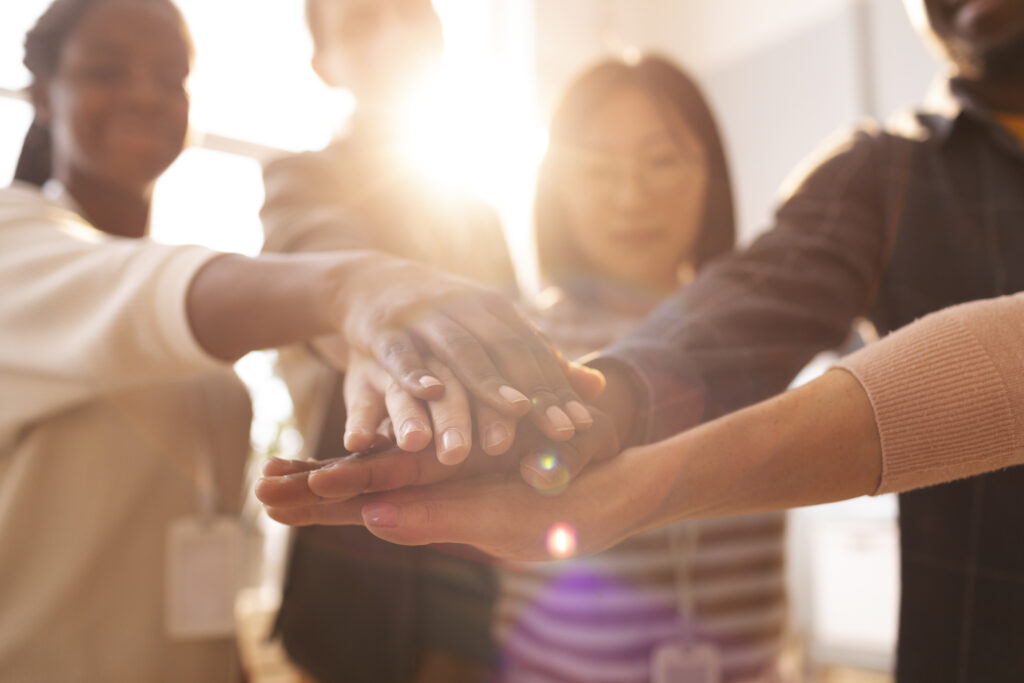The Transformative Power of Helping Others

A Journey Toward Kindness, Connection, and Collective Growth In a fast-paced modern world, where the race for achievement and the pursuit of personal goals often take center stage, the simple act of helping others can sometimes feel like a distant ideal. Yet throughout history, the practice of extending a helping hand has been the foundation upon which thriving communities are built and the underlying current that propels humanity forward. Helping others is not just a moral duty—it is a source of profound personal enrichment, a spark for societal change, and an invitation to experience the true meaning of connection. In this blog, we journey into the heart of what it means to help others, exploring why it matters, the various ways we can make a difference, and how these acts ripple outward, shaping lives in ways both seen and unseen. Why Helping Others Matters At its core, helping others is an expression of empathy—the ability to understand and share the feelings of another. Empathy prompts action, transforming compassion into tangible benefit. Whether it’s offering support to a friend in need, helping people to access resources to make their life easier to manage, volunteering at a local shelter, offering a ride to a doctor appointment, or simply lending a listening ear, acts of kindness uplift individuals and inspire hope. But the impact of helping others extends far beyond immediate recipients. Altruistic behavior is deeply rewarding, releasing endorphins and fostering a sense of fulfillment. Helping others may provide a high level of happiness, decreased stress, and improved mental health. In fact, communities built upon cooperation and generosity are more resilient, adaptable, and harmonious. Moreover, helping others challenges us to see beyond our own perspective. It cultivates humility, broadens our understanding of the world, and bridges gaps that divide us. When we step into another’s shoes, we learn the value of patience, gratitude, and shared humanity. Everyday Acts of Kindness Helping others does not always require grand gestures. In fact, the most transformative acts are often the simplest ones, woven quietly into the fabric of daily life. Here are a few ways to foster kindness and support within your own community: Offer a smile or a kind word: A genuine greeting or a simple compliment can brighten someone’s day and foster a sense of belonging. Listen actively: Sometimes, the greatest gift we can give is our attention. Listen without judgment; let people know they are heard and valued. Share your skills: Whether it’s tutoring, fixing something, or teaching a craft, sharing what you know can empower others and cultivate lifelong connections. Volunteer your time: There are countless organizations that rely on volunteers, from food banks to animal shelters, to giving someone a ride to the grocery store. Even a few hours can make a significant impact. Support local initiatives: Attend community events, promote small businesses, or participate in local cleanups to strengthen the fabric of your neighborhood. Be there in times of need: Reach out to those who are grieving, struggling, or facing challenges. Sometimes, presence alone is a powerful form of help. The Ripple Effect: How Helping Others Multiplies One of the most remarkable aspects of helping others is the ripple effect it creates. Acts of kindness inspire others to pay it forward, generating waves of goodwill that extend far beyond the original gesture. When you help someone, you set a precedent—they, in turn, may help someone else, and so the cycle continues. Communities built on mutual support become stronger, more compassionate, and better equipped to face collective challenges. I saw this happen in my workplace as we came together to help patients. Consider the story of a teacher who goes above and beyond to encourage a struggling student. That student’s newfound confidence may translate into success, which could inspire them to mentor others later in life. Small acts, multiplied over time, become sources of transformation and growth. Overcoming Barriers to Helping Despite its many rewards, helping others is not always easy. Barriers can include time constraints, fear of rejection, uncertainty about how to help, or even concerns about being taken advantage of. Yet most obstacles can be overcome with mindful intention and a willingness to learn. Start by recognizing that imperfection is not a flaw—it’s a part of being human. You don’t need to have all the answers or fix every problem. Often, simply showing up, offering encouragement, or sharing a moment of understanding is enough. If you’re unsure how to help, ask questions and listen to what people need, rather than assuming. Remember, the most meaningful help is tailored to the individual and given without expectation of reward. Helping Others in a Digital Age Technology has transformed the ways in which we interact and support one another. Online platforms and social media offer new opportunities to spread kindness, share resources, and connect with those who may be isolated or in need. Virtual volunteering, fundraising campaigns, and crowdsourcing solutions have become powerful tools for collective action. However, digital spaces can also breed misunderstanding and disconnect. The challenge is to use technology intentionally—to foster real relationships and encourage genuine support. Consider joining online communities that align with your passions, sharing positive messages, or donating to causes that resonate with you. The digital world, when harnessed thoughtfully, expands the reach of our helping hands. The Personal Benefits of Helping Others While the purpose of helping others is not personal gain, the benefits to the helper are undeniable. Serving others boosts self-esteem, reduces feelings of isolation, and provides a sense of purpose. It can also offer perspective during difficult times, reminding us of our own strengths and resources. Helping others teaches vital life skills—communication, empathy, adaptability, and conflict resolution. It encourages gratitude and reorients priorities, focusing attention on what truly matters. For children and young adults, participating in acts of service fosters character development and empathy, laying the groundwork for lifelong engagement. Stories of Kindness: Inspiration from Around the World Across cultures and continents, stories of kindness abound, offering inspiration and hope. Volunteers
Finding the Right Place

Once my brother and I accepted that our father needed to transition into Assisted Living, the next challenge was finding the right place for him. We wanted somewhere that would provide him with the care and structure he needed while still preserving his sense of independence and dignity. The search was daunting, filled with tough questions and emotional moments, but ultimately, it was a necessary step in ensuring his well-being. We started by making a list of must-haves. A place with attentive staff, engaging activities, good medical support, and—most importantly—a welcoming community. We toured several facilities, each with its own set of pros and cons. Some places felt too clinical, others too impersonal. Some had impressive amenities but lacked the warmth we knew our father needed. It became clear that this wasn’t just about finding a place with good reviews; it was about finding a place that felt right. One of the most difficult parts of the process was involving our father. We wanted his input, but we also knew that his cognitive decline made it hard for him to process the gravity of the situation. Sometimes, he resisted the idea altogether, wanting to stay in his home. Other times, he seemed open to the change but quickly forgot our conversations. It was a delicate balance—making sure he felt heard while also making the decision that was best for him. We asked every question we could think of. How was the staff trained? How did they handle medical emergencies? What activities were available to keep residents engaged? How did they ensure new residents felt at home? We also paid close attention to the residents themselves—did they seem happy? Did they interact with one another? The energy of a place was just as important as its amenities. After weeks of searching, we finally found the right place. It was warm and inviting, with a staff that genuinely cared about the residents. The facility had a good balance of independence and support, offering structured activities but also allowing residents the freedom to make their own choices. Most importantly, the people there—both staff and residents—felt like a community, not just a care center. Even with all the research and preparation, the final decision was emotional. We knew this move symbolized a new chapter, one where our father would no longer be living in the home he had known for so long. But we also knew that this was the right decision for his safety, his health, and his quality of life. In the next post, I’ll share what it was like to actually make the transition—how we helped our father adjust, the initial struggles, and the small victories that reassured us we had made the right choice.
Looking for signs of humanity? Try this!

What are humans capable of? Take a minute and watch this powerful video. See what it brings up for you in terms of human nature and what’s possible. Even in today’s chaotic world and often amidst emotionally challenging interactions. https://youtu.be/7qzMfgtf_GI?si=KTk8rVYqPDnTwMtK What are humans capable of? Sometimes, glimpses into human behavior offer surprises. What did you observe in this little video? I found it compelling because it shows us: What can happen in a pause? How kindness is contagious. How technology does not have to drive our behavior. How moving gratitude and compassion are So much about My Work Product is based on helping each other. That’s why, when I saw it, I couldn’t resist sharing it here!
